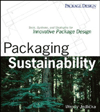With 2024 just around the corner, we turned to Alison Keane, President and CEO of the Flexible Packaging Association, to get her perspective on the challenges and opportunities in store for converters and suppliers in the year ahead.
PS: Last year, you said one trend would be the continued development of high barrier mono-material and all-polyethylene structures that are recyclable through store drop-off programs and readily recyclable with modern technologies. Did you see evidence of this trend in 2023? Do you expect it to continue in 2024?
AK: We have seen the trend continue. In this year’s State of the Industry survey, we delved even deeper into the recycle-ready packaging market by asking converters about the substrate, and of the 88% that were manufacturing recycle-ready flexible packaging, 80% reported that this meant mono-material polyethylene or polypropylene packaging. We expect it to continue to meet and exceed consumer product brands’ sustainability goals as well as the recyclability mandates that will be coming to fruition over the next several years.
PS: Last year, you cited an FPA survey in which 88% of converter respondents said they were using recycle-ready materials and 63% said they were using PCR content. Do you see converters continuing to prioritize the use of these materials? Do you see any other emerging materials and technologies gaining more attention?
AK: In 2022, 88% of packaging converters reported producing recycle-ready packaging, 63% reported using post-consumer recycled content (PCR), 38% bio-based materials, and 25% said they were producing reuse/refill systems and compostable packaging.
In 2023, converters continued to report 88% producing recycle-ready packaging. However, the PCR number rose to 72%, and bio-based increased to 43%. In perhaps the biggest leap, compostable packaging rose from 25% to 55%, and this year we also asked about paper packaging, which 56% percent of converters said they were now manufacturing.
Even Reuse/Refill packaging gained 2% in a year. The importance of these substrates/technologies continues to be described as extremely or moderately important by all respondents, with Recycle Ready, PCR content and mono-material (all PE/PP) ranking as the top three, in that order.
PS: As for flexible packaging in the health and medical arena, you noted an industry focus on materials and technologies to replace aluminum as the main barrier component, given the scarcity and cost of aluminum foil on the global market. Is this still a concern? Are there any indications that steps to address these concerns could surface in 2024?
AK: Yes. With the continued tariffs and new duties on imported converter-grade aluminum foil from South Korea and Thailand, many companies are looking for alternatives to this material for the barrier layer in order to continue to deliver high-barrier food and medical packaging competitively in the United States. It continues to be a concern – with no end in sight. The lack of awareness by the Department of Commerce to the need for this thin-gauge aluminum foil that is not produced domestically, is alarming, and will not only drive flexible packaging jobs offshore but will increase prices for these goods and services, and add to the continued supply chain disruption well into 2024.
PS: What are some of the ways that you expect government policy to impact packaging operations and materials in 2024?
AK: Implementation of the Extended Producer Responsibility (EPR) bills in Maine, Oregon, Colorado and California continue, and as we see the regulations take shape, we will get a better idea of how these programs will run. We will also see some of the other packaging considerations addressed – whether included in the EPR programs or tangential to such – like labeling for recyclability, PCR mandates, or toxics in packaging.
We have already seen PFAS legislation dictate not only paper-based grease resistance coatings, but processing aids for food packaging films as well, so expect suppliers and converters to continue to innovate out of those materials.
Labeling for recyclability, particularly if it is implemented state by state, with California slated to implement first in 2024, will certainly start to impact material selection also. The Federal Trade Commission’s Green Guides may also be updated in 2024, which will be key to trying to address harmonization across the states when it comes to labeling issues.
PS: In what ways might 2024 differ from 2023 in terms of the most significant issues facing the flexible packaging industry?
AK: I think the issues will remain the same. However, with 2024 being an election year, the playing field may look different. Certainly, on the federal level with the dysfunction in the House and both the House and Senate as well as the Presidency up for grabs, we will continue to see issues at the State level be the most prolific.
However, many state elections will take place in 2024, which usually bodes well for a less active policy year. Thus, we expect to concentrate on those active states with less political activity next year, while paying close attention to the races in the election states and at the federal level so that we prepare for the new policymakers and their agendas.
As stated above, we will also continue to pay close attention and engage on the implementation of the packaging bills already passed since other states and the federal government will take their cues from this work.
NOTE: The first installment in the 2024 Packaging Industry Outlook series featured an interview with Stephen Fieldhouse of Hydropac, who talked about how temperature-controlled shipping will grow in efficiency and resiliency in 2024. That story can be found here.










